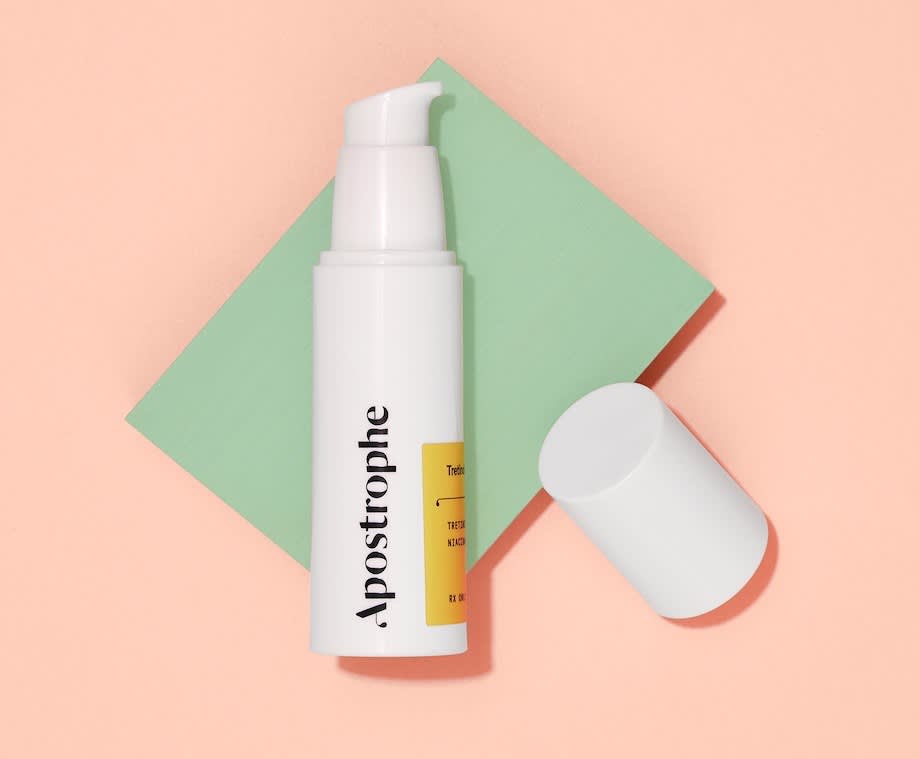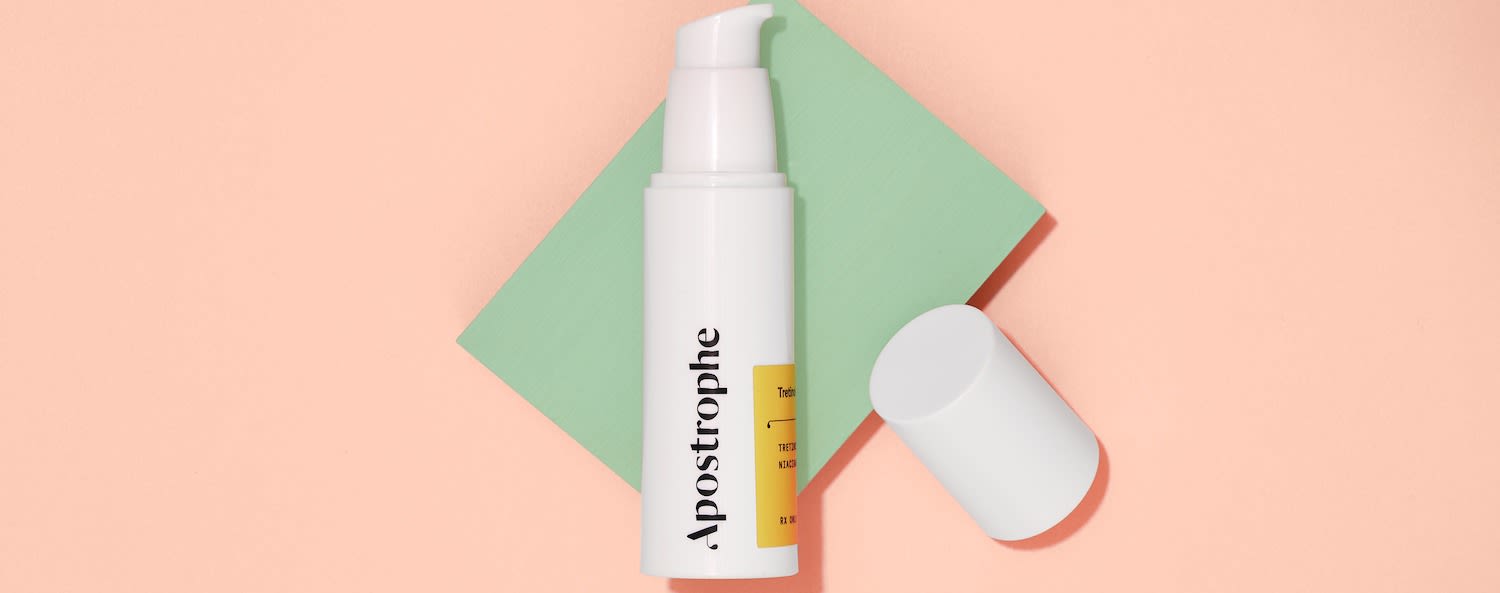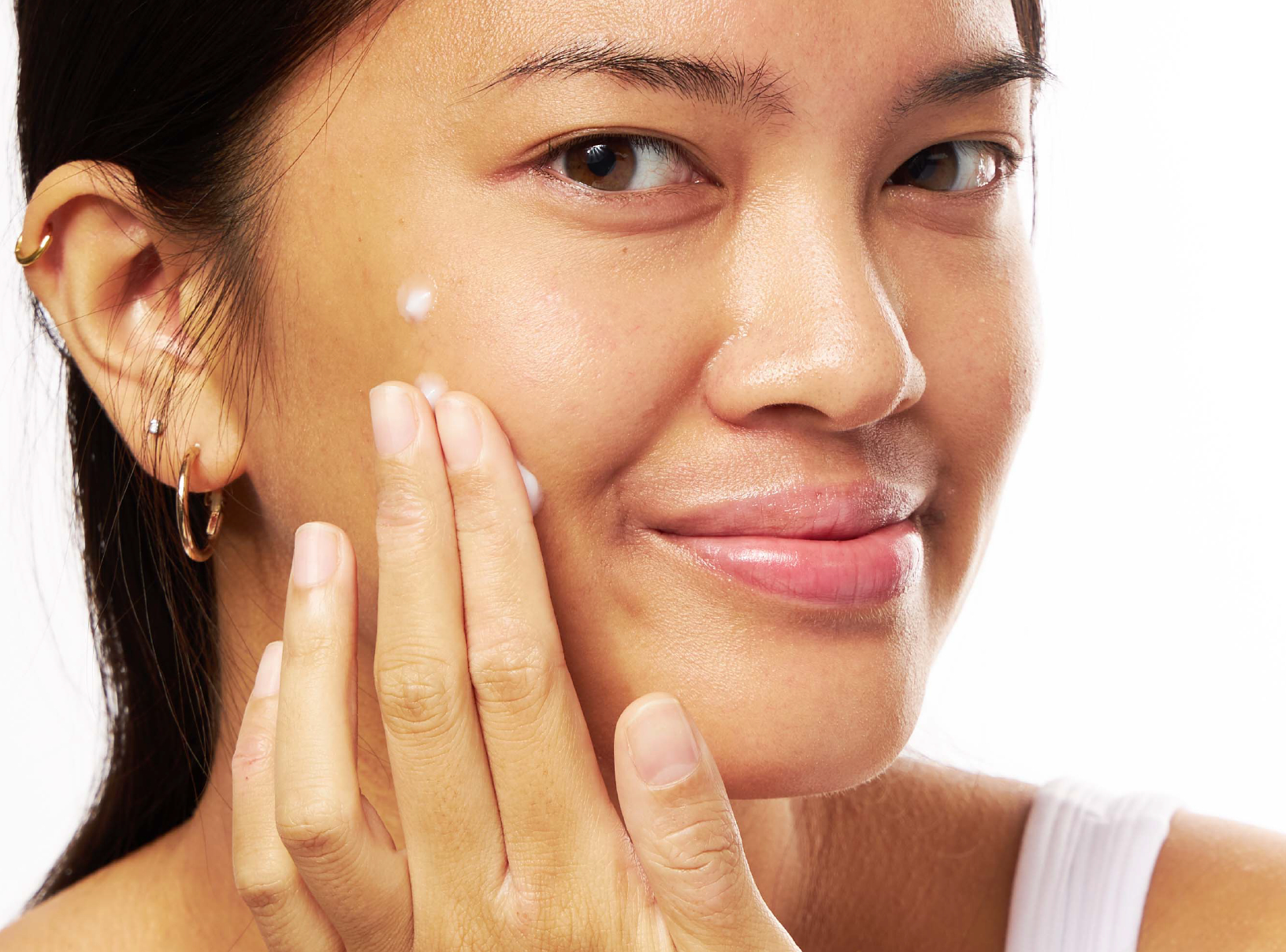Apostrophe Treatments
Is tretinoin okay for mild to moderate acne?


SHARE
Apostrophe Treatments
Is tretinoin okay for mild to moderate acne?
Medically reviewed by Kristin Hall, FNP
Written by Apostrophe Team
Last updated 4/1/2024
Available for several decades, tretinoin is one of the most widely used topical acne medications on the market.
Tretinoin is highly effective at treating and preventing acne, and has developed a reputation as a medication that’s commonly used to treat severe, recurring cases of acne.
Because of this, many people with mild acne ignore tretinoin as a treatment option, often in favor of less effective alternatives and over-the-counter products.
The reality is that not only does tretinoin work as a treatment for severe acne — it’s also a highly effective treatment for mild to moderate cases of acne.
In this guide, we’ll look at the improvements you can expect from using tretinoin to treat mild or moderate acne. We’ll also look at how tretinoin compares to other acne medications, including oral medication used to treat more severe cases of cystic or persistent acne.
Yes, Tretinoin is Okay for Mild Acne
We’ll get right to the point here.
Contrary to what many might believe, tretinoin isn’t the ultra-powerful acne medication that many people assume it is.
In fact, in a mild concentration, tretinoin cream or gel can be more effective (and less irritating) than many of the most widely used over-the-counter acne products.

PRESCRIPTION TRETINOIN
Target acne, dark spots, and signs of aging with this science-backed ingredient.
Topical tretinoin, whether in gel or cream form, is available in a range of concentrations. These range from very mild tretinoin products (for example, .018 or .025 percent tretinoin cream) up to significantly more concentrated tretinoin creams, such as tretinoin .1 percent.
Tretinoin 0.05 percent is often prescribed to patients, as this concentration of tretinoin is usually associated with higher instances of acne treatment and lower instances of adverse effects.
However, this isn’t the only concentration of topical tretinoin that’s used.
Many people with mild or infrequent acne instead opt to use a cream with a lighter concentration of tretinoin in order to prevent acne while limiting dryness, irritation and other common side effects of the medication.
Others use tretinoin on an every-other-day basis, letting them experience the skincare benefits of tretinoin with an even lower risk of experiencing side effects.
For people with severe or persistent acne, dermatologists may prescribe a cream or gel with a higher concentration of tretinoin. If you have mild acne, you can use a lower strength cream or gel, which can often provide many of the benefits of tretinoin with fewer or no side effects.
Our guide to tretinoin concentrations lists the most common tretinoin gel and cream strengths, along with information on which concentrations are the most widely used.
Tretinoin Works Well, Even at a Low Concentration
One of the biggest strengths of tretinoin is that it’s highly effective at treating and preventing acne, even at a relatively low concentration.
For example, in a 2005 study, researchers found that .025 percent tretinoin gel (approximately one-quarter of the maximum available concentration) produced an improvement in 28 percent of patients' acne over the course of the 12- to 15-week study.
Studies of .05 percent tretinoin cream also show positive results.
In a 2009 study, researchers found that a .05 percent concentration of tretinoin was enough to produce a “significantly greater” success rate than placebo.
The .05 percent concentration of tretinoin also produced a “mild to moderate” range of side effects, indicating that while tretinoin does have some side effects, it’s not an overly powerful or risky medication for people with mild or moderate acne.
Tretinoin Prevents Acne as Well as Treating It
Even at a low concentration, tretinoin not only treats acne, but can also prevent acne from coming back in the future with consistent and prolonged use.
Tretinoin works by increasing your body’s skin cell turnover cycle — the amount of time required for your body to replace old, dead skin cells with new ones. This makes it less likely for old skin cells and sebum to clog hair follicles, causing acne.
Essentially, a mild amount of topical tretinoin not only works extremely well as a way to remove acne from your face — it’s also a great way to keep acne off your skin for the long term.
In fact, studies tend to show that the longer you use tretinoin, the more effective it is at removing acne and keeping it away for good.
In a 2015 study, people with inflammatory and/or non-inflammatory acne applied a mild, .025 percent concentration tretinoin cream in combination with clindamycin one percent cream over the course of 12 weeks, with assessments of their facial acne after four and 12 weeks of treatment.
After four weeks, the tretinoin and clindamycin group reduced their acne lesions from 13.70 ± 4.80 to 7.40 ± 3.69. After 12 weeks of treatment, the acne lesions were reduced even further, with an average level of 1.30 ± 2.95 — a fraction of the original amount.
Should You Use Tretinoin as an Acne Treatment?
If you only have mild or moderate amounts of acne, it might seem like tretinoin may be heavy artillery. However, used at a low concentration or on an every-other-day basis, tretinoin may be a suitable alternative to over-the-counter acne treatments.
It's also worth noting that the side effects of tretinoin are generally temporary and also typically milder than those of other medications like isotretinoin (previously sold as Accutane®).
If you’re interested in using tretinoin to treat and prevent acne, our Complete Guide to Using Tretinoin for Acne is worthwhile reading. It covers everything you need to know about tretinoin as an acne treatment, from its effects to the basics of applying topical tretinoin to your skin.
Our Tretinoin 101 guide also goes into more detail about tretinoin as a medication, with detailed information on everything from tretinoin’s origins to its most common side effects, brand names, uses, and more.
All in all, tretinoin is an effective, time-tested acne treatment, whether your acne is mild or severe. Used properly on a consistent basis, you may experience a significant reduction in acne over the course of weeks and months, as well as continual prevention of further outbreaks.
Shop this post

Tretinoin
Like what you just read? Sign up for our email list to get the scoop on skincare science delivered straight to your inbox.

Deep Dives
A dermatologist shares his thoughts on the recent studies about benzoyl peroxide and benzene.
Read More
Education
What is milia?
What is milia? Today, we’re jumping into one type of bump that you may have heard about most commonly in infants — milia.
Read More
Education
Best moisturizer for acne-prone skin
If you have combination acne-prone skin, figuring out which moisturizer is best for your skin might be tough. In this guide, we break down the best moisturizer for combination, acne-prone skin.
Read More